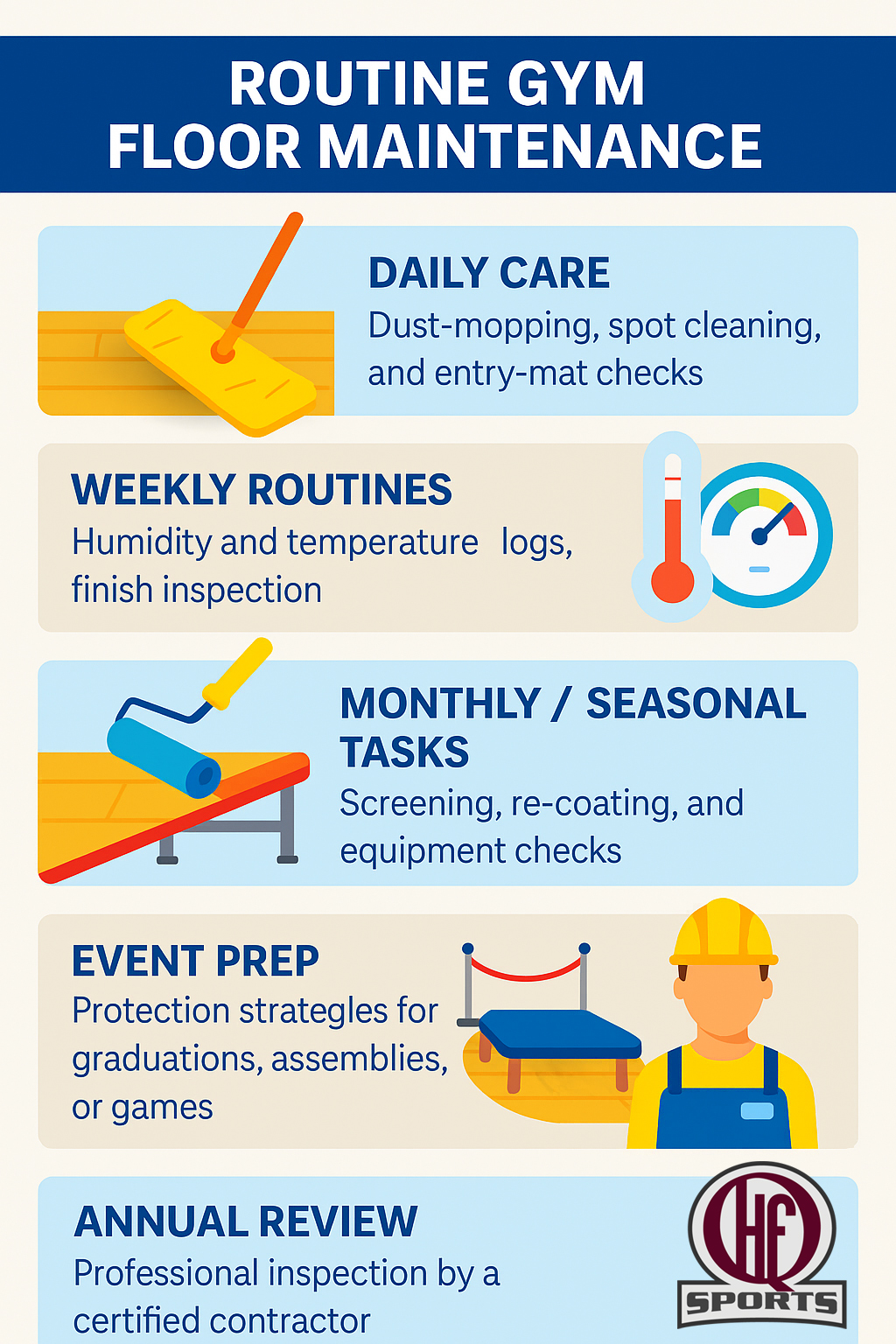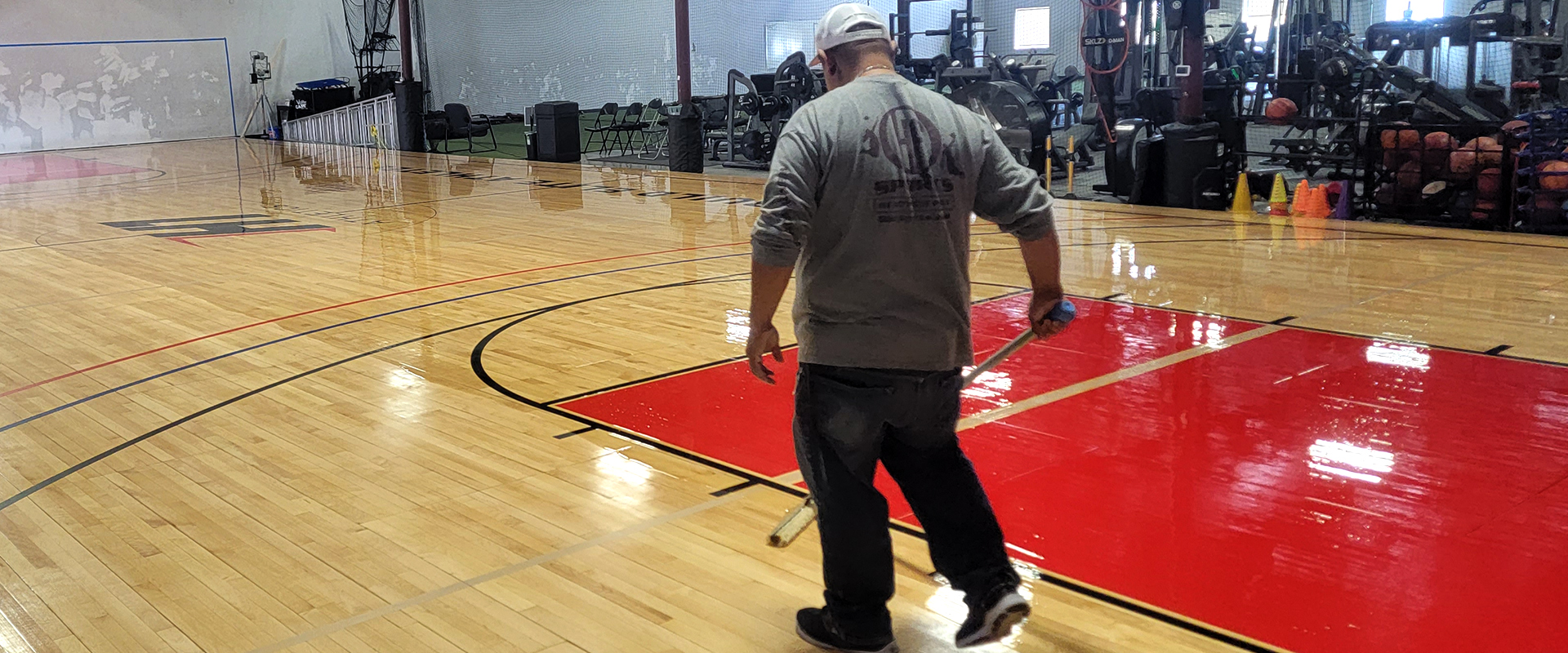Keeping your gym floor in top condition isn’t complicated — it’s about consistency.
A well-maintained hardwood sports floor lasts decades, looks professional, and protects athletes from slips or injuries. The key is routine care: simple daily, weekly, and seasonal habits that prevent small issues from becoming expensive repairs. Whether you manage a high-school gym, college rec center, or community court, following a structured maintenance checklist ensures your floor stays safe, bright, and game-ready year-round.

The short answer:
Dust-mop every day, control humidity between 35 % and 50 %, clean with MFMA-approved products only, and inspect your finish regularly. That’s it — those few actions stop 90 % of wear, buckling, and dulling before they start.
Why it matters:
Hardwood floors breathe. Every change in temperature or moisture causes them to expand or contract. Even one unventilated weekend or an unnoticed spill can trigger warping, cupping, or loose boards. Routine maintenance stabilizes conditions, preserves coatings, and keeps your investment performing like new.
"Ready For Play!" Maintenance
Each section below provides clear steps you can follow immediately — no jargon, no guesswork. Bookmark this page or print the PDF to keep courts consistent across seasons. By practicing these small, repeatable habits, you’ll extend the life of your gym floor, reduce costly downtime, and maintain that championship-level shine athletes love.
For quick reference, remember this: clean daily, monitor humidity, protect during events, and refinish annually — the four pillars of lasting gym floor performance.
Daily Gym Floor Maintenance
(or every use day)
Dust-mop (treated) 1–3 times, daily depending on traffic. It's a good idea to give a quick walk through between P.E. classes and events.
Spot-clean spills immediately; never let water sit. A facility can post as many "No Food or Drink" signs as they want, there will be spills.
Check walk-off mats at entries; shake/replace if saturated. Especially on days with incliment weather, it's important to forecast what foot traffic could bring onto your gym floor.
Weekly
Inspect for: new gaps, cupping/buckling, finish wear at keys/benches, black heel marks.
Verify HVAC holding RH/temperature setpoints; log readings.
Monthly / Per Season
Edges & equipment check: bleachers, goals, scorer’s tables for floor contact damage.
Line/finish condition audit: schedule screen & recoat annually if traffic warrants.

Annually
Professional inspection (MFMA contractor).
Screen & Recoat: QHF Sports recommends refinishing any gym floor annually.
Plan branding updates (lines/logos) during finish cycles.
8–10 Years (typical)
Sand to bare wood & reseal/repaint if finish is thin or repairs accumulate. The need to sand your gym floor varies by use.

